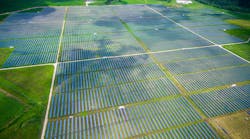In November 2003, the International Energy Agency (IEA) Wind Implementing Agreement (IA) for Cooperation in the Research and Development of Wind Turbine Systems held its Topical Expert Meeting #41 on the Integration of Wind and Hydropower Systems. This meeting convened a group of industry, academic, and government officials with expertise in wind power, hydropower, and utility and transmission system planning and operation.
Their purpose was to discuss the potential for coordinated operation of wind and hydropower in serving load, the benefits and detriments in doing so, and to identify the related opportunities and issues. As a result of this meeting and interactions with the IEA Hydropower IA, a recommendation was made to IEA Wind to establish a formal research task to address the myriad of questions and unresolved issues pertaining to the topic. Subsequent to this meeting, in 2004, IEA Wind established a research and development (R&D) task to investigate the potential for integrating wind and hydropower resources on the electrical grid. The research task, also known as an “Annex,” was the twenty-fourth such task established by IEA Wind, and was entitled, Task 24: Integration of Wind and Hydropower Systems. Seven member countries of IEA Wind joined the task: Australia, Canada, Finland, Norway, Sweden, Switzerland, and the United States. When established, an R&D task is assigned an Operating Agent (i.e., managing director). For Task 24, the National Renewable Energy Laboratory (NREL) in the United States, on behalf of the U.S. Department of Energy, was selected as the Operating Agent.
The primary purposes of Task 24 were to conduct cooperative research concerning the generation, transmission, and economics of integrating wind and hydropower systems, and to provide a forum for information exchange. The former of these two purposes was addressed through case study projects performed at participating institutions within each member country. The latter purpose related to information exchange was accomplished via a series of collaborative R&D meetings, seven of which were held: a kickoff meeting (February 2005 in the United States); one web meeting (June 2006); and five R&D meetings (September 2005 in Switzerland, September 2006 in Australia, May 2007 in Italy, September 2007 in Norway, and June 2008 in Quebec, Canada).
The IEA Wind Task 24 Final Report summarizes and presents the results of the work conducted by the task participants, the important issues and analysis methods identified, and the related conclusions. The report was assembled in two volumes: the first providing objectives, background, summary results, and conclusions; and the second describing the methods of study employed and details about the participant case studies upon which the conclusions of the task were drawn....(read more...)

